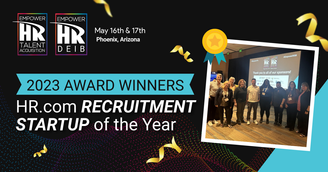What is a blind candidate presentation?
Blind candidate presentations are a quick way to reduce bias and create a fair and consistent talent screening and interview process.
This part you probably know if you’re in recruiting, so we won’t belabor this section (although admittedly some founders and executives don’t know the concept): basically, you remove all identifying details about the candidate when you present them to hiring managers. This removal process typically involves:
- Ethnic background
- Gender
- Name
- Education
- Age
- Personal Interests
The idea is to strip all potential biases and have the candidates evaluated solely on their background and answers to initial-stage questions. Now, admittedly if you have audio of the candidates answering questions (more in a second), you can usually infer gender; not always, but often, as men have deeper voices. Everything else above generally cannot be inferred in a blind candidate preview process.
So, do blind candidate presentations work?
There are some arguments that blind candidate previews work, yes. Others, such as SHRM, have argued that it works, but it’s just one piece of the overall bias-combatting puzzle. The New York Times, in a February 2016 “Work Issue,” called blind hiring “potentially the only solution to bias.” (Fun fact: in that same article, there’s a quote which says “Looking at five decades of research all together, human beings just aren’t that good at hiring.” Hoo boy!) Overall, the concept does work — for example, it increases the chances of a woman being hired into a tech role by as much as 46%.
As with anything, there are cons to blind hiring too — it’s hard to assess that much-balleyhooed “cultural fit” because you strip out personal interests, for one. When the process is in pilot mode, it can make hiring managers uncomfortable, especially if they have a multi-decade career of assessing candidates in the “normal” way. Hiring manager discomfort can lead to further gaps in the recruiter-hiring manager relationship. The whole concept of a blind process can seem a little “woke,” which is a dividing line of modern work: are we doing things to be diverse, or doing things to better the business? (The short answer is, hopefully, both.)
How to create a blind candidate presentations with Honeit
After a call with a candidate, click the ‘bias button’ to remove the candidate’s name, photo, resume and LinkedIn profile. Just share a few sound-bites from the call to reduce bias and let talent speak for itself.
How can you execute on a blind candidate presentation?
Basically you’re shifting the normal paradigm of recruiting: just like we need to eliminate recruiter notes in an age of audio, so too do we need a few shifts to make this work. To wit:
- Strip out the identifying elements from received resumes.
- Use the stripped resumes to determine who to do initial phone screens with.
- Record the initial phone screens using HoneIt. (We have video capability, but don’t use that in this context.)
- Take the audio files, sorted by each candidate’s response to specific questions, and present those to the hiring manager.
- Refer to “Candidate A,” “Candidate B,” etc. instead of name.
- Ask for the hiring manager’s top four choices.
- Keep the top choices “blind” until a day or two before those interviews start, and remind the hiring manager of the candidate with their audio file from the initial round.
- Let the hiring manager do their round of interviews.
- After that round, give them the identifying information.
It is not a completely perfect process, no. They will still be able to see and interact with candidates in terms of gender, race, presumption of age, etc. on their round of interviews. But it will help reduce bias and advance the right candidates into later rounds, based on expertise, poise, knowledge, and perception of skill.
How important is it to combat bias, really?
It’s tremendously important for a number of both intangible and tangible reasons. First: the business world is changing, and more generations coming up the ranks expect this out of their organization. Second: there are bottom-line implications for more diverse organizations, including notable research from McKinsey on the topic, and the pathway to more diversity is less bias. Plus: after a while, a “homophily” — all the same — organization has trouble in disruptive times, because there’s a ton of group-think and “We’ve always done it this way.” When your back is against the wall in terms of product decisions, you want diversity of thought and opinion.
So it is important, and blind candidate previews using HoneIt cloud-captured and sorted audio are one path to that reduction in bias and increase in diversity.


